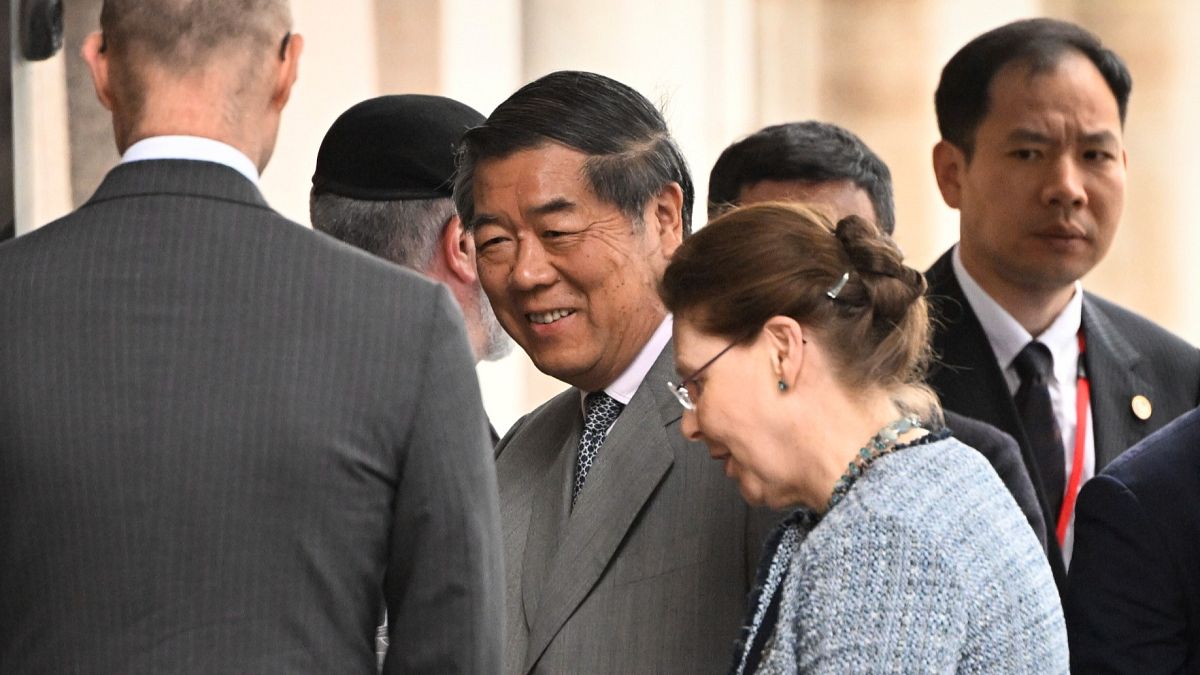Published on
•Updated
With a crucial 12 August deadline looming, US and Chinese trade officials returned to the table in Stockholm on Tuesday to attempt to break the deadlock over tariffs between the world’s two largest economies.
US President Donald Trump’s administration has taken a tough stance on what it deems to be a massive trade imbalance with China, slapping the Asian economic giant with some of the steepest tariffs in every round of import tax hikes.
Progress in Stockholm could lay the groundwork for a high-level meeting between Trump and Chinese President Xi Jinping later this year, which would be crucial for locking in any major agreements.
US Treasury Secretary Scott Bessent and Chinese Vice Premier He Lifeng made no public comments to reporters after the first day of talks on Monday, after meeting for nearly five hours behind closed doors at the Swedish prime minister’s office.
Before the talks resumed on Tuesday, Swedish Prime Minister Ulf Kristersson met with Bessent and US trade representative Jamieson Greer over breakfast.
US engaged in tariff talks on all fronts
The United States has struck deals over tariffs with some of its key trading partners and allies — including Britain, Japan and the European Union — since President Donald Trump announced “Liberation Day” tariffs against dozens of countries in April. China remains perhaps the biggest unresolved case.
“The Chinese have been very pragmatic,” Greer said in comments posted on social media by his office late Monday.
“Obviously we’ve had a lot of tensions over the years. We have tensions now, but the fact that we are regularly meeting with them to address these issues gives us a good footing for these negotiations.”
“Whether there will be a deal or not, I can’t say,” Greer added in the clip posted on X from MSNBC’s “Morning Joe”. “Whether there’s room for an extension, I can’t say at this point. But the conversations are constructive and they’re going in the right direction.”
Many analysts expect that the Stockholm talks, at a minimum, will result in an extension of current tariff levels that are far lower than the triple-digit percentage rates as the US-China tariff tiff crescendoed in April, sending world markets into a temporary tailspin.
The two sides backed off the brink during bilateral talks in Geneva in May and agreed to a 90-day pause — which is set to end on 12 August — of those sky-high levels. They currently stand at US tariffs of 30% on Chinese goods, and China’s 10% tariff on US products.
Fentanyl and AI chips
Other issues on the agenda include access of American businesses to the Chinese market, Chinese investment in the US, components of fentanyl made in China that reach US consumers, Chinese purchases of Russian and Iranian oil and American steps to limit exports of Western technology, like chips that help power artificial intelligence systems.
On his Truth Social media platform, Trump insisted late on Monday that he was not “seeking” a summit with Xi, but may go to China at the Chinese leader’s invitation.
While the Chinese side has offered few specifics of its aims in Stockholm, Bessent has suggested that the situation has stabilised to the point that China and the US can start looking toward longer-term balance between their economies.
Since China vaulted into the global trading system three decades ago, the United States has sought to press leaders in Beijing to encourage more consumption in China and offer greater market access to foreign-made — including American — goods.
Wendy Cutler, a former US trade negotiator and now vice president at the Asia Society Policy Institute, said that Trump’s team would face challenges from “a large and confident partner that is more than willing to retaliate against U.S. interests”.
Rollover of tariff rates “should be the easy part,” she said, warning that Beijing has learned lessons since the first Trump administration and “will not buy into a one-sided deal this time around”.

